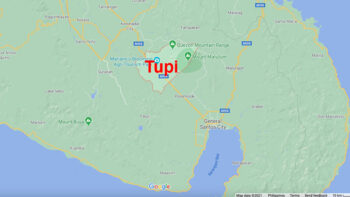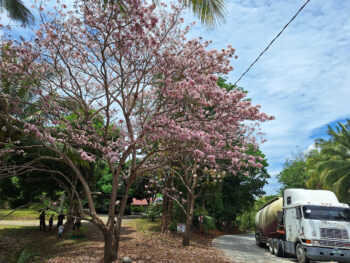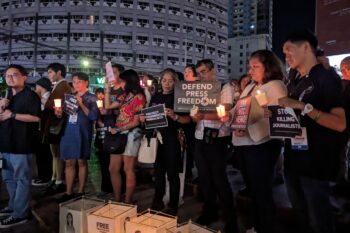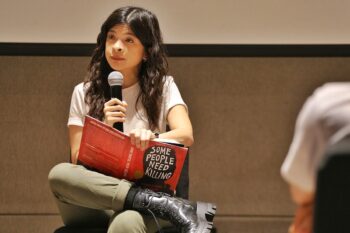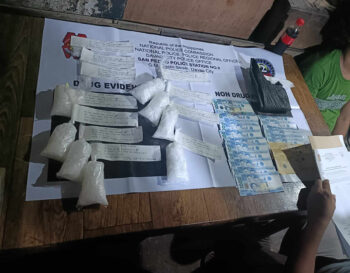
(In the run-up to the 36th anniversary of People Power that ousted the Marcos dictatorship, let us remember what Mindanawons did to fight for freedom.
This piece by Rudy Buhay Rodil was among the essays featured in the book ‘Turning Rage Into Courage: Mindanao under Martial Law,’ published by MindaNews in 2002, on the 30th anniversary of the declaration of martial law by President Ferdinand Edralin Marcos)
If I were to capsulize the life of Ninoy Aquino from the time he was detained in 1972 to the day he died in 1983, I would be content with the phrase “life of freedom and dignity.”
One cannot be without the other. One is not free without dignity. Or vice versa. What kind of freedom? Inner freedom. The one that thrives even in detention. Even in a state of extreme physical deprivation. Or torture.
Ninoy’s death unleashed the pent up energies of people, which for years could not be expressed. Once released, there was no stopping it. It was like Mayon volcano spewing its deadly lava; or like Pinatubo unleashing thousands upon thousands of tons of lahar. It exploded gloriously in EDSA I. The rest is history.
But did EDSA I eliminate all the institutions of martial rule?
No. One such institution is the mushrooming of security agencies. Born in the days of martial law, it has now grown into a full blown industry. One cannot seem to live in peace nowadays without the blue guards. Business establishments, government offices, schools, hospitals, subdivisions, even churches. Name it.
It is the only industry that thrives on the insecurities of people. It promises to give peace of mind to its clients.
Established allegedly by retired military officers, its orientation is naturally military in character. Its philosophy of or outlook on security is very military. One will notice, too, that there is not much difference between the military and the police establishment as far as security arrangements are concerned. Military or police checkpoints are supposed to screen people, vehicles, etc., without exception, in search of suspected criminals or political offenders. Because there is no exception, everybody, mostly innocents, are inconvenienced.
When Senate President Franklin Drillon was ordered to remove his shoes by airport guards lately at the San Francisco Airport in the United States, purportedly for security reasons, he was a victim of this logic.
The industry served a function. But because its existence has been nurtured by people who depended on them for security, the momentum it created also jeopardized the very philosophy of certain institutions.
One of the major casualties of martial rule are schools.
Schools are designed to teach freedom: train students in critical thinking not just accept without question what is delivered to them by their teachers. Or swallow everything that they read. Yet what do we see at the gates of these schools? NO ID NO ENTRY in bold red paint for all persons entering campus, whether they are students, staff, teachers or visitors. Or NO STICKERS NO ENTRY for vehicles. No arguments allowed.
It is argued that these measures are for the security of the institutions constituents. The display of IDs and the wearing of uniforms will enable security guards to spot, even from afar potential culprits, such characters as criminals, thieves, drug pushers and assassins and so on. (Have they forgotten that criminals are intelligent people whose instincts dictate that to elude detection they must blend with the crowd. Don’t we see this all the time in movies?) I don’t know, but it always sounds to me like burning the whole barn to kill a mouse. It is the checkpoint mentality. There is no time for intelligence (or intelligent) work to identify the culprit, so, put up a checkpoint (or choke point) and let everybody go through a funnel, so to speak. In one school of higher learning in Mindanao, there is an entrance channel for the male, another for the female. Only one person can pass at a time. There is also another passage for the exit. Constituents must display their IDs up front.
In the early days of martial law, intelligence agents were installed in every government office. Their function was to ferret out those espousing anti-government ideas. In schools, blue guards were assigned at the gates to identify or apprehend activists, or confiscate subversive materials.
It is now almost twenty years since Ninoy died and it is a good time to reflect on the lessons of that phase of our history.
Prior to the declaration of martial law in 1972, students and visitors could come in and out of school campuses without hassle. The gates were wide open and there was seldom any congestion of human traffic.
During the Marcos dictatorial regime, 1972 to 1986, certain practices symptomatic of the martial regime were introduced. Under pressure from government whose officials were paranoid about “subversives” who might infiltrate campuses and encourage students to resist the regime, school administrators started to install “checkpoints at the gates of their schools. Security or blue guards were hired and instructed to check the IDs and bags of students and teachers.
The fact that many of our school administrators today do not see anything wrong with these practices seems to indicate that they may have succumbed to the convenience of security culture or have simply lost their alertness for compromises with certain fundamental principles of life. Or the very principles upon which their institution stands.
It is now more difficult to teach freedom in the classroom where the security guards are allowed to dictate to students and teachers what to do, where to pass or not to pass, where to enter or not to enter. They are authorized to accost students and teachers who do not wear their IDs or uniforms.
But then what happens to education for freedom? It is no longer easy to teach freedom in a situation where the beauty of freedom is not experienced to the full, where the model of life in freedom cannot be amply demonstrated. Or where following the dictates of authorities is a simpler choice than being responsible for one’s decisions.
It is so awkward to teach freedom in the search for knowledge where library personnel, the guardians of the repository of knowledge, or the very teachers themselves, the agents of knowledge, have acquired the behavior of security guards.
It even becomes amusing to teach freedom of expression where students and teachers are told in official memoranda that it is prohibited for men to wear earrings or long hair. Yet we know from history that these are part of the normal day to day attire of our male forbears; and they were proud of them.
How can we teach students to trust in freedom when we, their acclaimed betters, cannot trust freedom ourselves. People are generally people of goodwill, not of criminal intent.
Security is reactive; it is based on paranoia or fear; fear of the unknown. Paranoia is not normal logic. Security is a very poor substitute for intelligence. A school should nurture intelligence, not fear.
In a way, security culture makes people behave like groceries: neatly tagged, with correct prices, with correct labels. Factories are packaging-conscious to attract customers.
Uniforms transform people into entities worse than groceries because those wearing it all look the same, unthinkingly the same; the only concession being that some are a bit more creative than others but the intention is the same – package them to project an image. What image? An image of intelligence? Or an image of obedience?
When administrators empower security guards to check on teachers and students, the former are transformed from hired guards to integral personnel with vested authority above center directors, department chairpersons and college deans, and so on, the real authorities who alone can discipline their subordinates. Another
layer in the table or organization is created but without the responsibility to respect the dignity of their “subordinates.” They can always cover themselves by saying: “Just following orders.”
We can only appreciate the example of Ninoy if we live in freedom. Especially freedom from fear itself.
(Historian B.R. Rodil teaches at the Mindanao State University-lligan Institute of Technology. He wrote ‘Two Hills from the Same Land’ and several other books, the latest of which is ‘Kalinaw Mindanao: The story of the GRP-MNLF Peace Process 1975-1996.’ He writes ‘Angay-angay lang’ for MindaViews, the opinion section of MindaNews)
Updated, 23 February 2022: Mr. Rodil has retired from teaching at MSU-IIT.

